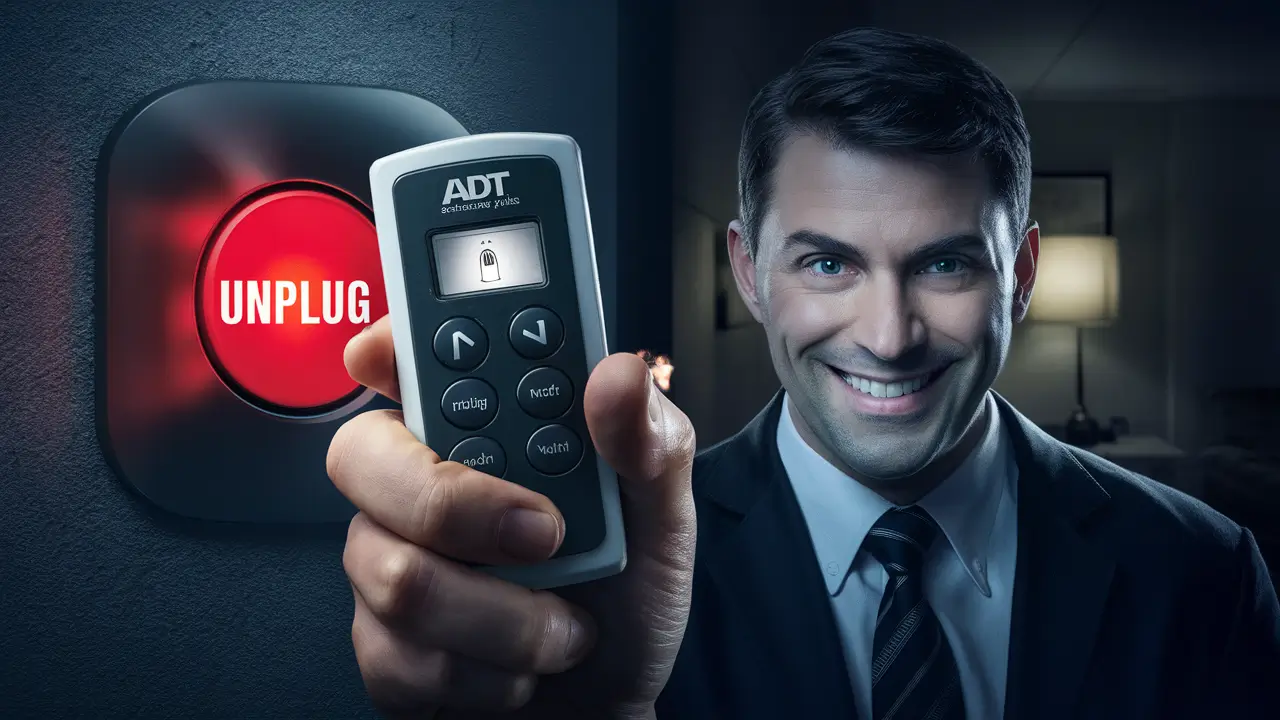ADT is the leading home security system in America, and it is also among the most common security systems used in homes. This is truly advanced equipment and monitoring with the hope of preventing burglars and at the same time notifying the homeowners and the authorities of any intrusion. But what if as an ADT customer, an individual/homeowner wished to turn off or disconnect their security system – for instance, when undertaking some interior modifications to their homes? Are you able to switch off an ADT home security system by unplugging it to stop it for some time? Or will doing so set off the alarm and result in high fees for having ADT come out to inspect the house?
To quickly and easily put the ADT alarm system into the ‘off’ position, you do not need to do any complicated maneuvering; just pull the plug to switch it off. However, there are a few important factors to consider before unplugging your ADT equipment: notification requirements include the number of notifications that need to be provided on any update on the system, backup power provision for the system, and the policies that need to be followed in case of a false alarm. By reviewing these essential facts, you will learn how to avoid hidden fees and inconveniences when turning off your security system.
Notification Requirements Usually, all the ADT monitoring contracts specify that the customer has to inform the monitoring center in advance before they can disarm an alarm system this is because of the false alarm response and fines that the customer is likely to face. When an alarm occurs during the time that ADT is not informed of a valid reason to do otherwise, the monitoring center is legally bound to contact emergency response systems and law enforcement. One has to dial the ADT using the password or security code before disconnecting to ensure that the police are not alerted in the event a signal is lost due to power failure.
Additionally, based on your monitoring contract, ADT may also expect you to give them advance notice should there be a need to unplug even for a momentary period – sometimes the notice could be up to 24 hours. It is always recommended that one should refer to the documentation on the monitoring plan or call ADT to find out how long the notification period for activation is. Giving this advance notice as stated above helps in avoiding false alarms and penalty charges which might exceed a hundred dollars in some regions.
Backup Power Sources As a last word, even after affording proper notification, merely pulling out the main plug socket to your ADT system will not be enough to switch off the system if your monitored equipment has backup power supplies. Almost all ADT alarm panels, motion sensors, window/door contacts, and other system components provide an auxiliary power source or are labeled as ‘‘uninterrupted power supplies.
Such backup power sources enable security systems to run for several hours or sometimes even days in case a burglar attempts to tamper with the main power source. Thus, if you do not mechanically separate the backup batteries or remove them with the AC power, merely pulling the main power plug may not remove electrical power from the system for as long as you planned. If planning to kill power even temporarily, then it is advisable to always check the user manuals or even consult an ADT technician to determine every power source for your equipment.
False alarm policies refer to chargeable procedures that are formulated to regulate the misuse of the alarms and these are in the form of fees. Even if the alarm signals to the monitoring center are triggered by cutting power to your ADT system but you have followed all notification procedures, you are still liable to pay fines plus response fees – which can go up to $ 100 or more. These policies and costs of ‘false alarms’ differ by state and municipalities but demand four to six ‘false alarms’ in the year to risk cancellation of response by the local police departments. It also leads to higher rates or even contract cancellation by providers such as ADT, among other challenges.
Ensure you go through all the policies from both ADT and your local law enforcement department concerning what would happen if there are raw signals or inadequate notification during a planned power outage in a community. Prevent battery backups when you can or ensure that transmission signals are off if you are trying to avoid fees by disconnecting components. And, notify ADT at once if a planned system disruption results in monitoring center activity as it leads to penalties.
To sum up, therefore, it is normally possible to switch off an ADT alarm system in the ways outlined above but be careful. Scan your monitoring plan documentation for notification lead times as well as thoroughly discuss the details with ADT technical support to ensure all power sources are deactivated. Last but not least is to comprehend false alarm policies including fees associated with them to not get headaches from accidental monitoring center triggering. Your ADT alarm can be disconnected temporarily without the cops being notified or you being billed on your next bill when there is a power outage or interruption again, with preparation and knowledge of your system. However, one must not neglect the proper measures in order not to have to pay for such a lesson the next time your service is active.
Protect your home today with ADT’s top-rated security solutions!
Call now at +1 877-470-7879 to get a free consultation and find out how you can secure your home with the best in the business. Don’t wait—ensure your peace of mind with ADT!


